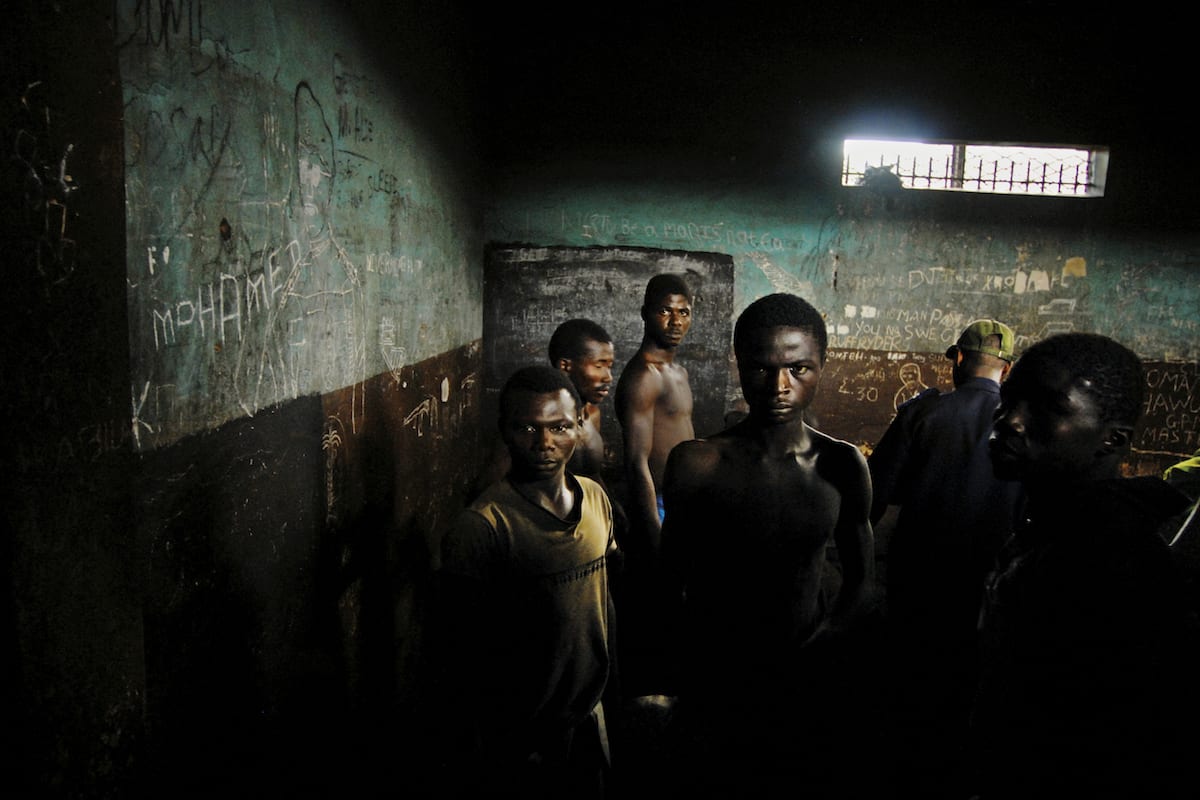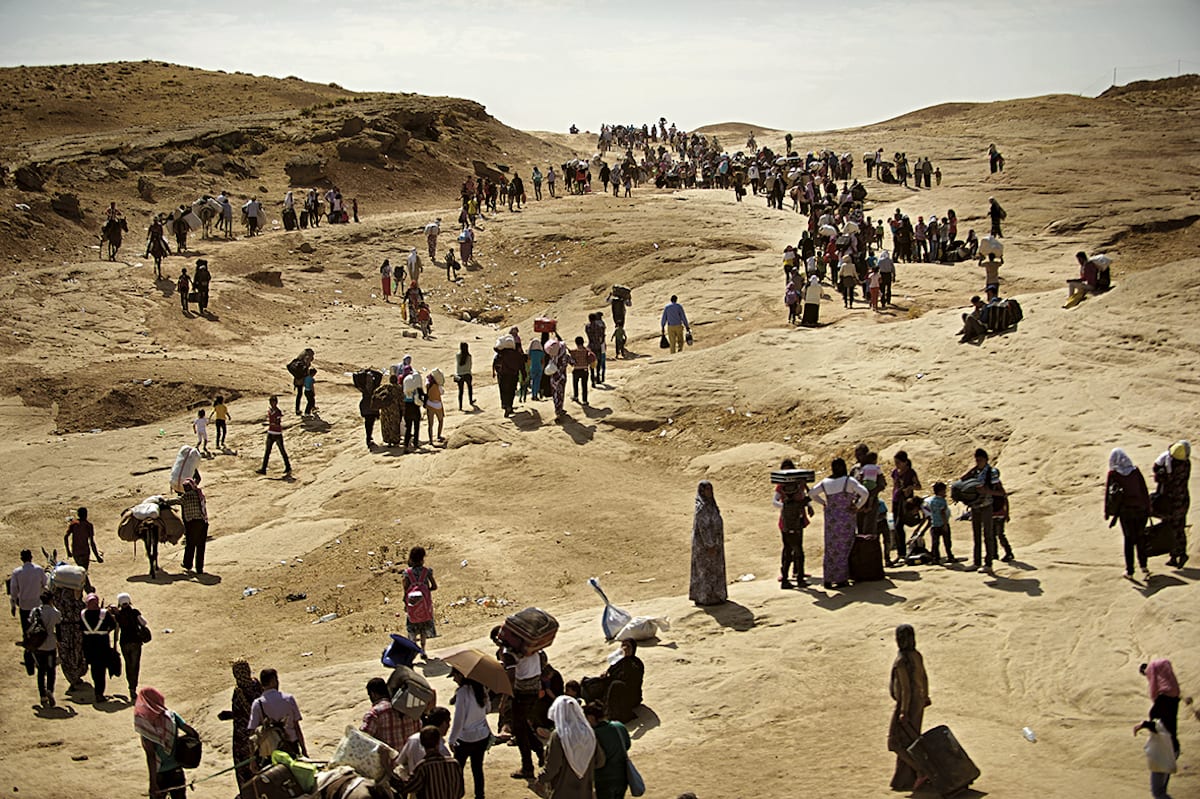Throughout the Wellcome Photography Prize submission period, British Journal of Photography is profiling photographers who are exploring the importance of health in society and the impact health issues have on people and communities worldwide. In line with the Medicine in Focus category, BJP spoke to Lynsey Addario about her series on maternal mortality in Sierra Leone.
Lynsey Addario is no stranger to conflict. The Pulitzer Prize-winning photojournalist has borne witness to many of the major wars and devastating humanitarian crises of recent history. She is one of the few photographers to have worked in both pre and post-9/11 Afghanistan, documenting life under Taliban rule followed by the American invasion. She has been kidnapped twice – first in Iraq and again in Libya – where she was photographing clashes between Gadhafi troops and rebel forces. She captured the human cost of the war in Darfur, helping to expose the atrocities taking place. The list goes on.
Her extraordinary life and experiences of working in some of the most dangerous places on the planet are laid out in her memoir It’s What I Do, which was optioned by Warner Brothers and is currently set to be directed by Ridley Scott and star Scarlett Johannson. In her forthcoming book, Of Love and War, which is published later this month, Addario reflects on her commitment to exposing the dire consequences of conflict through a personally curated selection of work from the Middle East, South Asia and Africa.
It was through documenting conflict that Addario was first exposed to the notion of documenting health. The two, she discovered, are inextricably linked. “Many of the countries I was working in no longer had the medical facilities or professionals necessary to treat the population – from trauma injuries to chronic illness, or something as basic as maternal health,” she explains. “For me, as a visual storyteller, I felt compelled to capture this.”

In 2009, Addario received a prestigious MacArthur Fellowship, which she used to delve further into this subject matter. She decided to focus on maternal mortality, determined to shed light on what continues to be a largely invisible epidemic. “Like so many others, I was not aware that approximately 550,000 women died from childbirth in 2009,” she remembers. “I was shocked, and, as a woman, a daughter, an aunt to my sisters’ children, and a potential mother one day, I could not believe that something so routine and natural could be so dangerous.”
In an industry dominated by men, in which Addario herself has fought hard to establish a career, women and women-specific issues are often overlooked. Throughout her career Addario has endeavoured to give a voice to the women living and working in conflict zones: from the struggles of everyday life in Afghanistan to the gradual redefining of social boundaries by Saudi Iranian women. “Like so many other stories I decide to focus on, I wanted to contribute to the collective coverage of maternal mortality in order to bring awareness to the issue, and hopefully, to help change the statistics,” she explains. Being a woman enabled her to do this: granting her access to one of the most private and primal of female experiences.
Addario’s journey began in Afghanistan. She spent weeks traversing the country, visiting remote areas where maternal death rates were especially high. “I saw pregnant women making their way to prenatal checks on donkeys. I spent my 36th birthday in a remote hospital with no electricity — the midwives were treating emergency cases with lanterns,” she recounts. “Pregnant women who lived outside of the major cities in Afghanistan basically had to hope that they had no complications during childbirth, because they might not make it to a proper medical facility.”


It was in Sierra Leone that Addario encountered the most desperate of situations. The country had fallen victim to a health-care system crippled by the brutal, 11-year civil war that ended in 2002. At the time, Sierra Leone had just three obstetricians and fewer than 300 trained doctors for a population of roughly six million people. As a result, one in 23 women were dying in childbirth, giving the country the third highest maternal mortality rate in the world. Other factors included an extremely high rate of teenage pregnancy, leading to complications during delivery; poor access to professional medical care coupled with ill-equipped clinics and hospitals; and a cultural preference for traditional births. In 2010, the year that Addario arrived, the government had announced an initiative giving all pregnant and lactating women free healthcare in an attempt to begin to change this reality.
As in all of her work, Addario honed in on individual experiences in order to expose a much wider issue. Establishing this level of intimacy with her subjects, particularly given the sensitive situations in which she works, is a central part of her practice. This was particularly crucial when photographing women in a context where they are so vulnerable. “I like to try and build relationships with people over time, whether its hours or days, so they feel comfortable with me. It is so important to give people a voice, but also to maintain their dignity,” she explains. “Most women have let me document their births and complications, and unfortunately, some of their deaths.”
It was in the Magburaka Government Hospital that Addario met Mamma Sessay, an 18-year-old woman who had travelled hours from her remote village just outside of Freetown, by canoe and then ambulance, while in labour. Sessay was giving birth to twins, the first of which she delivered at home. “I spoke with her at length while she was resting before delivering the second twin,” remembers Addario. “We discussed how she had wanted to continue studying instead of marrying at a young age but that her father had pressured her into an early marriage.”

Addario remained with Sessay as she delivered her second child, almost 24 hours after the first, and was with her when she passed away from haemorrhaging soon after. Addario then accompanied Sessay’s sister back to her village, where she documented Sessay’s funeral, and her family and friends in mourning. “I just couldn’t believe how unnecessary her death seemed, and it inspired me to continue documenting maternal health and death to try to turn these statistics around.”
The experience filled her with a sense of helplessness. “I felt like I was tangentially helping through documenting the lack of healthcare and doctors in given places like Afghanistan or Sierra Leone, or even the United States, but I knew any response to the stories I produced would take time, and not directly help the people I was photographing,” she reflects. Originally published in TIME, the images of Mamma Sessay were shown internally to board members of Merck and they initiated the birth of Merck for Mothers, for which Merck gave 500 million dollars to fight maternal death around the world
The rate of maternal mortality has continued to steadily decrease since Addario’s visit. This is largely due to healthcare initiatives and the commitment of NGOs, but also as a result of the work of journalists dedicated to raising awareness about the subject. In the words of Addario: “Ultimately I think a compelling photograph, or series of photographs, can draw attention to issues we often overlook.”

The Wellcome Photography Prize is calling for work that will shed light on, and raise awareness about, stories of health, medicine and science. Each category winner will receive £1,250 and be featured in a London exhibition; the overall winner will receive £15,000. Entry is free and the deadline for submissions is 17 December 2018.
–
This article is supported by Wellcome. Please click here for more information on sponsored content funding at British Journal of Photography.
